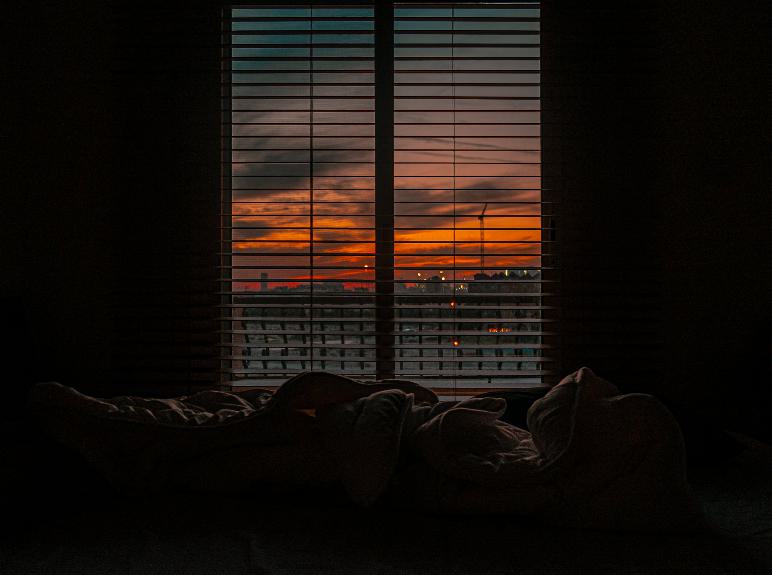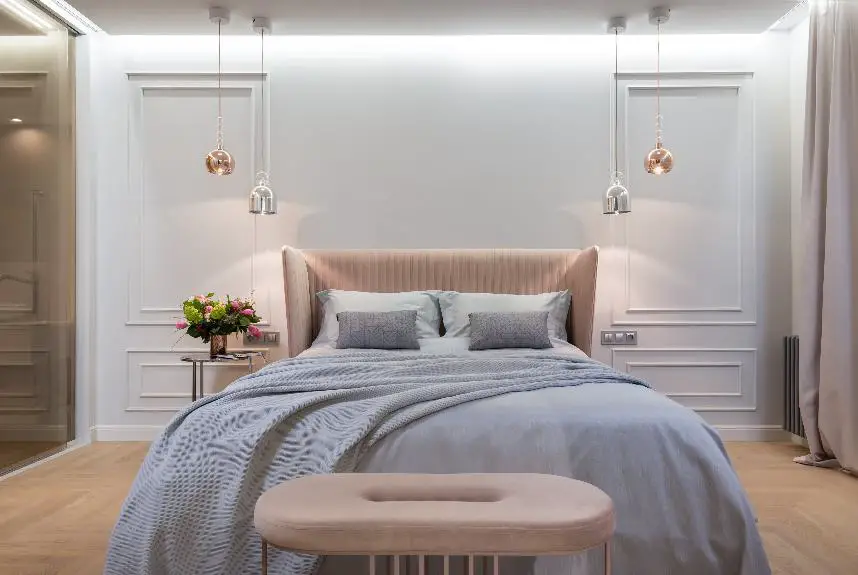Place the bed against the longest wall in a rectangular room to optimize space and room flow. This allows for easy movement and space for other furniture.
Avoid placing the bed on the wall with the door or closet to prevent blocking access.
In small rooms, if necessary, place the bed against the shortest wall, but this might limit space for nightstands.
The goal is to find a balance between comfort, accessibility, and functionality.
Assessing Room Dimensions
The placement of a bed in a rectangular room depends on the room's measurements. A typical strategy is to position the bed against the longest wall to create a balanced look and allow for easy movement. However, if the room's proportions are uneven, placing the bed on the shorter wall may be better to open up the space.
The bed's position affects the room's layout, including space for bedside tables and storage. Assessing the dimensions helps plan for these elements. Using room angles can make the space seem larger and more appealing.
Considerations for privacy and light influence bed placement, particularly regarding windows. The room's size factors into decisions about privacy and light exposure.
Considering Window Placement
Window placement is key in a bedroom's layout, affecting natural light and room function. Positioning the bed to avoid blocking light and reducing glare is essential, especially in the mornings.
For a functional and restful bedroom, place the bed along the longer wall with an east-facing window to capture morning light and allow for nightstands, adding symmetry to the room.
Alternatively, placing the bed on the shorter wall frees up floor space for extra furniture or a workspace, keeping the sleep area separate from work activities. This layout prevents windows above the bed, which can interfere with sleep due to direct light and limit overhead storage options.
Maximizing Wall Space
In a rectangular bedroom, placing the bed against the longest wall allows for better furniture arrangement and increased storage potential. The bed, as the largest piece, influences the placement of other items. This location prevents a confined feeling and enables the addition of bedside tables and storage units on either side of the bed.
Additionally, installing floating shelves or wall-mounted cabinets can effectively use vertical space for extra storage without overcrowding the room. The correct furniture layout should facilitate easy movement and accessibility while integrating storage that complements the room's design.
Proper planning can make a rectangular bedroom appear more spacious and organized.
Enhancing Room Flow
Placing a bed along the longer wall in a rectangular bedroom can optimize space and maintain balance, providing room for nightstands and enhancing sleep comfort. Alternatively, positioning the bed against the shorter wall can make the room appear larger and leave more space for movement, which is especially useful for small bedrooms. This layout can also accommodate additional furniture like desks or bookshelves without overcrowding.
Considering interior design principles, it's important to position the bed to complement the natural light and avoid direct sunlight that may disrupt sleep. A well-considered furniture arrangement that takes into account balance, functionality, and aesthetics can improve the bedroom's flow and atmosphere.
Accommodating Additional Furniture
When adding furniture to a rectangular bedroom, it's important to select pieces that are functional and maintain the room's flow. In small bedrooms, the bed should be positioned to leave space for other items like nightstands, dressers, and seating. Choose furniture that fits the room's size to prevent overcrowding.
Consider storage options like beds with drawers or under-bed solutions, especially if a dresser doesn't fit. In rooms used for work, place desks or vanities near windows to use natural light. Bookcases or shelves can organize and display items. Larger rooms may accommodate a reading nook or exercise space.
Aesthetics are important; furniture should match the room's style and create a balanced atmosphere. Avoid adding too many pieces to keep the room uncluttered. Embrace a less-is-more approach to maintain a minimalist appeal.





